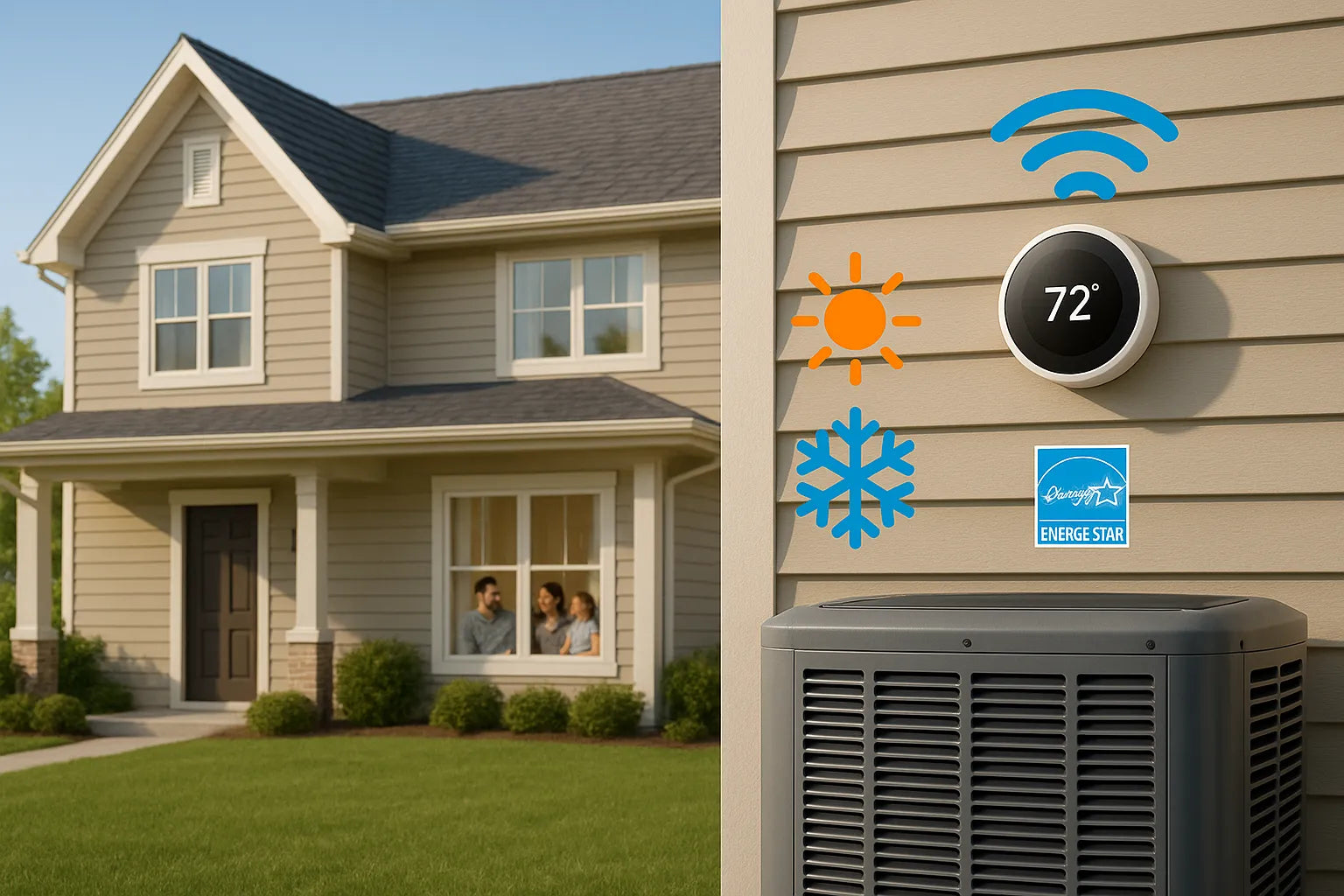Smart thermostats promise lower bills and better comfort, but only when you choose one that plays nicely with your HVAC system.
Why Smart Thermostats Matter in 2025
In most U.S. homes, heating and cooling still swallow over 40 % of annual energy use. A smart thermostat tackles that waste by automating tiny temperature tweaks you’d never think to make on your own. Think of it as a personal energy manager: it watches your patterns, learns when rooms are empty, and nudges the set‑ to a degree or two when no one will notice. Over a year, those small adjustments often shave 8 – 20 % off utility bills—real money you can track in the app’s monthly report. And because models such as ecobee and Nest are now ENERGY STAR certified, many utilities offer rebates to offset the upfront cost.
Learning Algorithms: The Brain Behind the Savings
Early programmable thermostats relied on rigid schedules. Modern smart units, powered by machine‑learning algorithms, study how long your furnace or heat pump takes to reach a target temperature. After about a week, they begin “pre‑heating” or “pre‑cooling” so rooms are just right when you wake up—without running longer than needed. They also adapt to seasonal swings; for example, shortening the morning warm‑up when shoulder‑season sun does the job for free. This self‑tuning cuts the guesswork that often leads to overshooting set‑points and burning extra kilowatts.
Remote Control: Comfort From the Road
Stuck late at work or landing at the airport early? A quick tap in the thermostat app can delay your evening cycle or bump it up before you walk in. Remote access sounds convenient, but the real value is eliminating hours of unnecessary run‑time. Homeowners who often travel or manage rental properties tell us the feature alone cut 10 – 15 % from their bills. Just make sure your router offers a strong 2.4 GHz signal near the thermostat location—spotty Wi‑Fi can cancel out the benefits.
Geofencing & Occupancy Sensors: The “Is Anyone Home?” Test
Most leading models use your phone’s GPS or onboard motion sensors to learn when the space is empty. The moment the last phone leaves the geofence, the thermostat slips into an energy‑saving setback—usually 3 – 5 °F. When someone crosses back into the zone, it ramps up before they reach the door. For families with irregular schedules, this beats rigid programming and avoids the classic mistake of cooling a vacant house all afternoon.
Weather‑Responsive Adjustments: Outsmarting Mother Nature
By pulling local forecasts from the web, smart thermostats trim runtimes when a cool front rolls in or preload chilled air before a heat wave peaks. Pairing a weather‑smart thermostat with a high‑SEER R‑32 heat pump system compounds the savings because the equipment itself already operates more efficiently under part‑load conditions. Together, they form a dynamic duo that responds to real‑time outdoor shifts instead of yesterday’s average.
Compatibility Basics: Will It Work With My HVAC?
Most U.S. residential systems run on 24‑volt (low‑voltage) controls, which nearly every smart thermostat supports. The main exceptions are high‑voltage electric baseboards and older line‑voltage wall heaters. Check the wiring letters behind your existing stat:
-
R, W, Y, G = conventional furnace/AC stages
-
O/B, AUX = heat pump reversing valve & strip heat
If you see these, you’re likely in good shape. Unsure? Snap a photo and upload it to the manufacturer’s compatibility checker or reach out to The Furnace Outlet’s free Design Center for a quick verdict.
The C‑Wire Question: Powering the Brains
Many smart thermostats need a continuous 24‑V supply—the famous “C wire.” Newer furnaces, air handlers, and package units include the terminal, but older systems sometimes don’t. Workarounds include:
-
Installing a $15 C‑wire adapter kit
-
Using the “G‑wire swap” (not ideal if you rely heavily on manual fan mode)
-
Running a new cable—best done during other HVAC upgrades.
Special Cases: Heat Pumps, Dual‑Fuel, and Zoned Homes
Smart thermostats shine with heat pumps because precise control over strip‑heat lockout temperatures prevents costly electric backup from engaging too soon. Dual‑fuel setups (heat pump + gas furnace) need models that can switch between fuels based on outdoor temps. Zoned systems may require add-on dampers or multiple stats networked together. Before buying, confirm the unit explicitly lists: “multi‑stage heat pump,” “dual fuel,” or “supports zone panel.”
Installation: DIY or Call a Pro?
Swapping a thermostat looks easy—two screws and a few wires—but misidentifying a common wire can fry a $300 board. Confident DIYers should:
-
Kill power at the breaker.
-
Label each wire as you remove it.
-
Update the thermostat firmware during setup.
If you’re already investing in new equipment, say an R‑32 AC and gas furnace combo, bundle the thermostat installed with that job. A licensed tech will verify staging, heat‑pump balance points, and any needed dip‑switch changes at the air handler.
Tracking Results: Using the Data You Paid For
Once everything is live, the app’s energy dashboard reveals run‑time, set‑point trends, and weather impacts. Compare the “before vs. after” bills to confirm savings. If the chart flags excessive runtime, replace filters or schedule maintenance through The Furnace Outlet’s vetted contractor network. Pairing the thermostat with smart accessories, like leak detectors or indoor air‑quality sensors, gives an even clearer picture and helps you spot small issues before they balloon into repairs.
Tips for Maximum Payoff
-
Enable auto‑away modes from day one.
-
Fine‑tune setbacks: 4 °F is a sweet spot for most homes.
-
Keep firmware current to gain new features and security patches.
-
Use utility rebates—check your local power company’s website.
-
Audit your whole system every spring and fall for the best long‑term savings.
Ready to upgrade? Browse compatible systems or chat with our experts at The Furnace Outlet. Your HVAC, and your wallet, will thank you.







